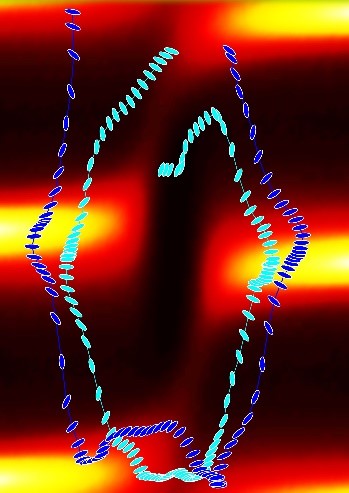Bacteria in flow
Written By
Category
Research
Posted On
November 1, 2012
Share This

Flow is ubiquitous in bacterial habitats, with fundamental consequences for the behavior, ecology and distribution of microorganisms. We use microfluidic experiments, microscale visualization and mathematical modeling to study the interplay between flow and bacterial functional traits, such as shape and motility. For example, we discovered that the coupling of the chirality (‘handedness’) of helical bacterial flagella and velocity gradients in flow leads to preferentially oriented movement, known as rheotaxis. Bacterial rheotaxis is characterized by drift across streamlines originating from reorientation of the cell body due to a lift force acting on the flagellum, and could hamper the quest for nutrients by bacteria. Recently we discovered a novel and counterintuitive phenomenon by which the combination of bacterial motility and shear in flow within a channel results in concentration of cells near the walls, and consequently in a strong enhancement of bacterial attachment to surfaces compared to quiescent conditions. We are now investigating the influence of geometric constraints on the motion of bacteria swimming in flow, with the goal of understanding the transport of bacteria in natural environments, such as groundwater.
For more information, please contact Eleonora Secchi (secchi@ifu.baug.ethz.ch) or Dorothee Kurz (kurz@ifu.baug.ethz.ch).